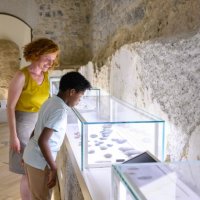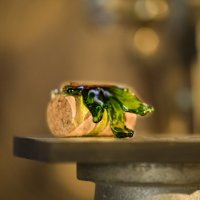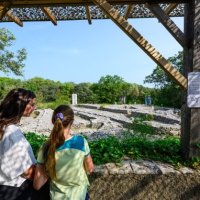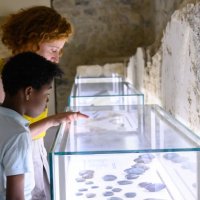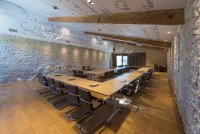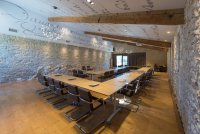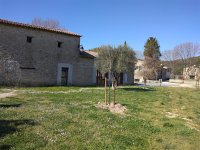Fontanès
It was most probably to take advantage of the presence of water that people settled in Fontanès: numerous wells, the only sources of drinking water in the community until the post-war period, attest to this hypothesis.
Let us mention in particular those in the Rue Puits des Mirabaud.
An important communication route also crossed the territory, linking the coast to the Cévennes (Alès, Anduze).
In the Middle Ages, there was a tollgate at the Laroque farmhouse to be precise. The latter still retains some of the beautiful remains of that time, although it has become the seat of a winegrowing operation.
The parish, given to the bishops of Maguelone at the end of the 13th century, was a branch of that of Sainte-Croix-de-Quintillargues. Until the 18th century, it was called Sainte-Croix de Fontanès.
The first church, burnt down by the Camisards, is still unknown; the second, built in the 18th century, was demolished because it was too small, and the present church dates from the 19th century.
Fontanès, a small village devoted to wine-growing, has the typical architecture of the wine-growing expansion that characterised the Languedoc in the 18th and especially the 19th centuries.
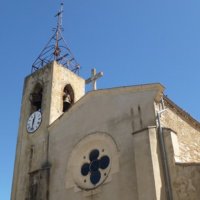
Mairie de Fontanes
13 Rue Puits de Mirabaud
04 67 55 25 20
Site Internet
Facebook
Heritage and culture in Fontanes
- Modern church
- Well
- Vineyard architecture
- Viticulture: The commune is classified as AOP Languedoc and AOP Pic Saint-Loup
- Patrimoine historique
The partners of the Tourist Office
du Grand Pic Saint-Loup in Fontanes :

